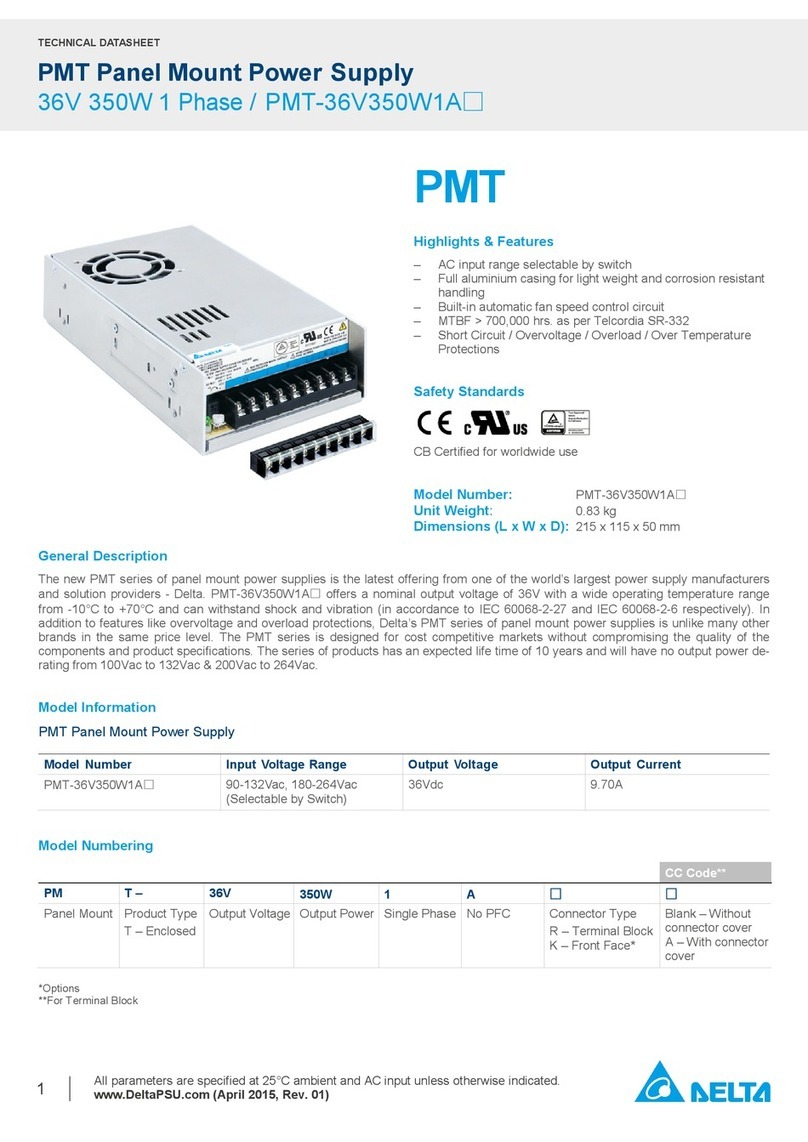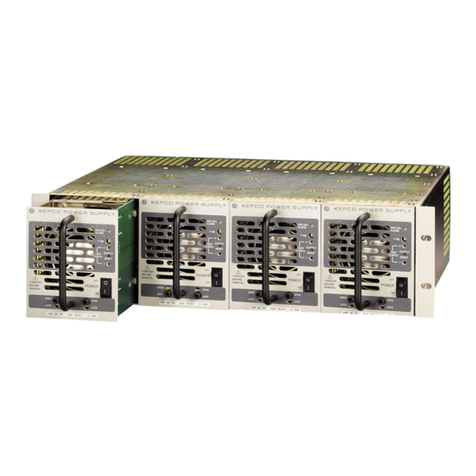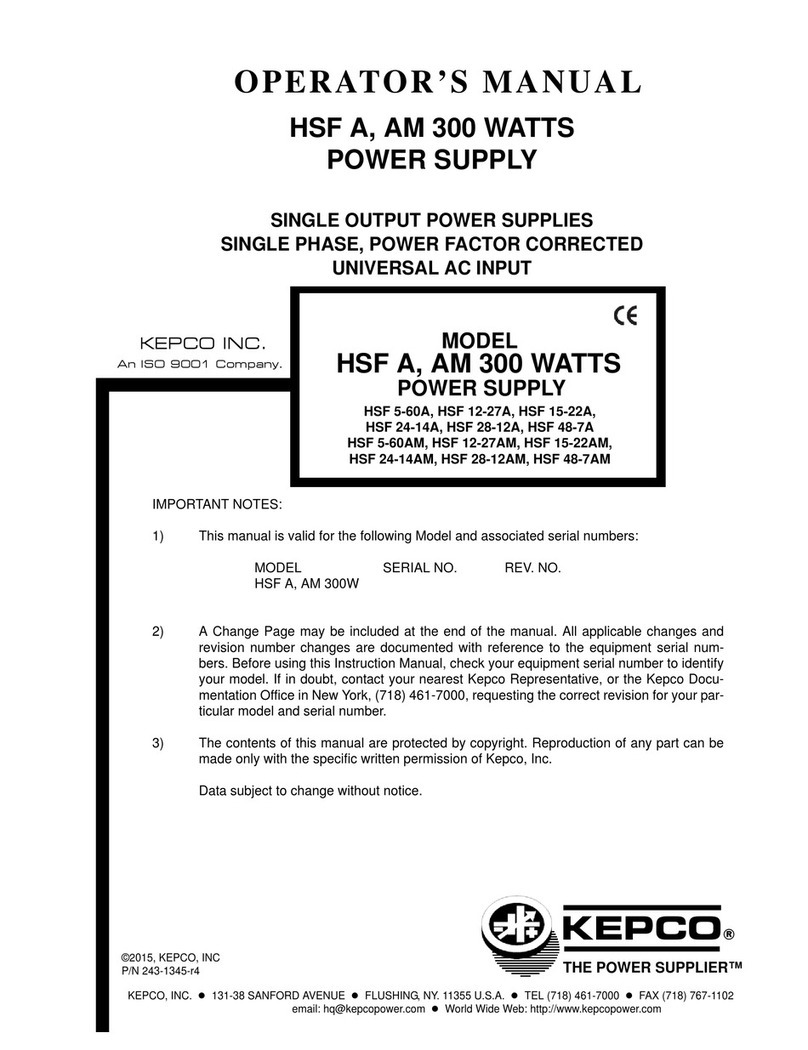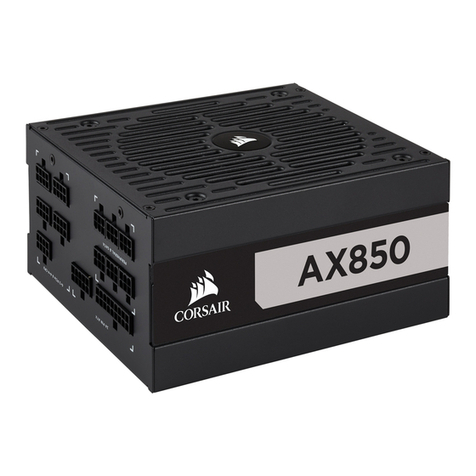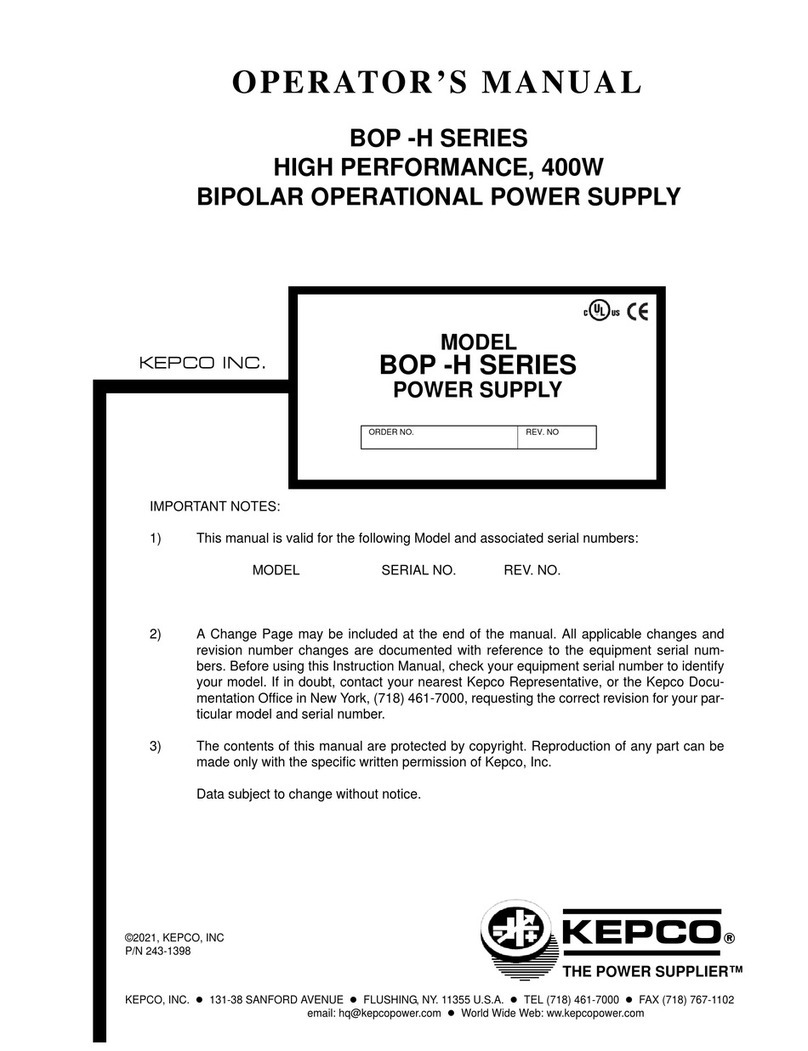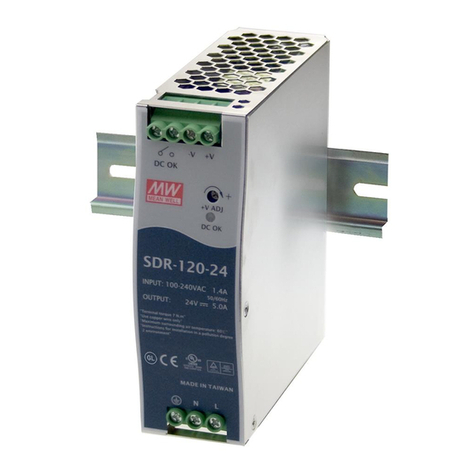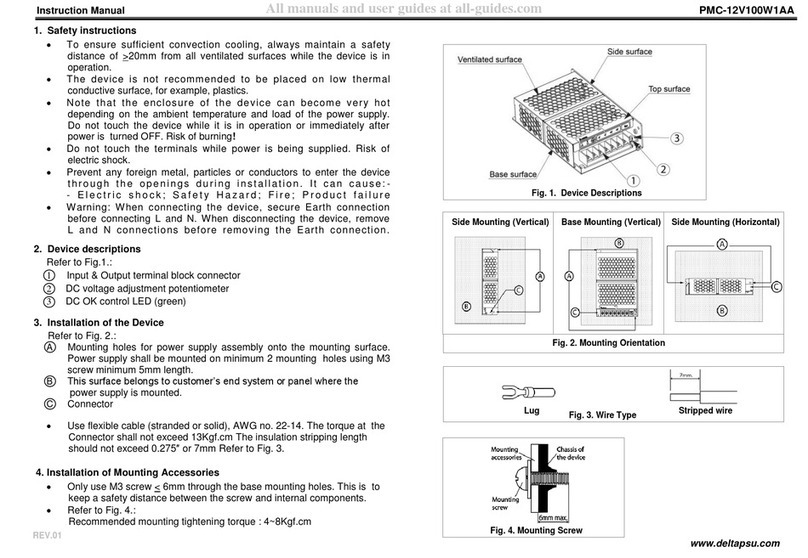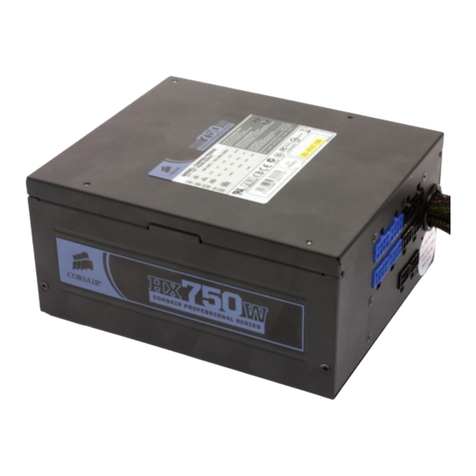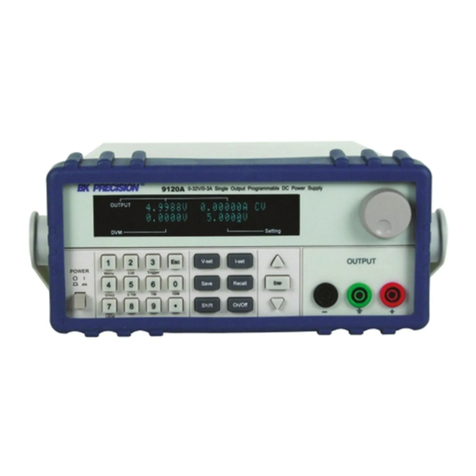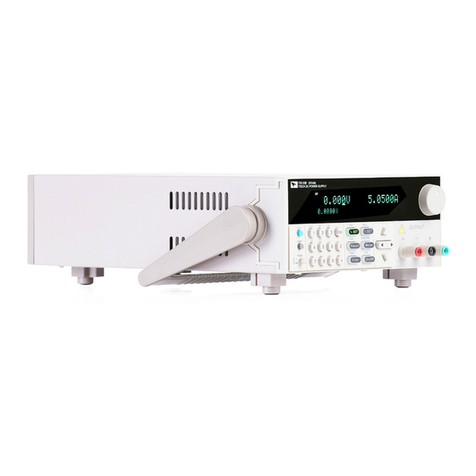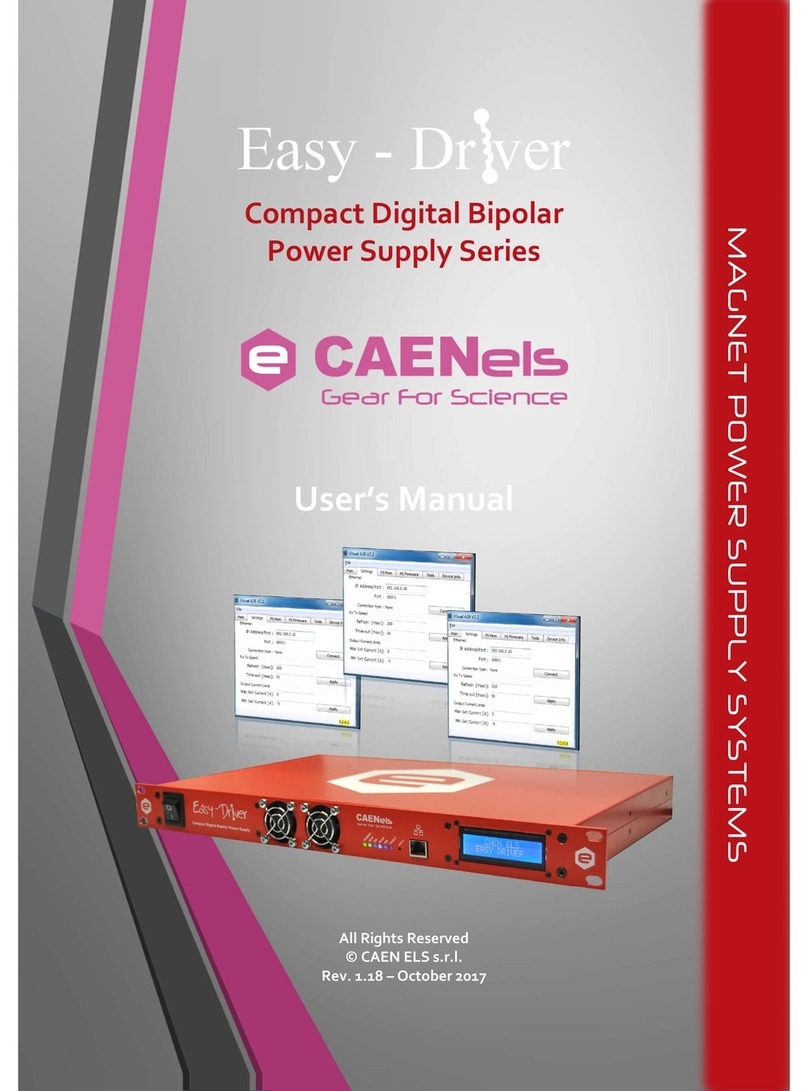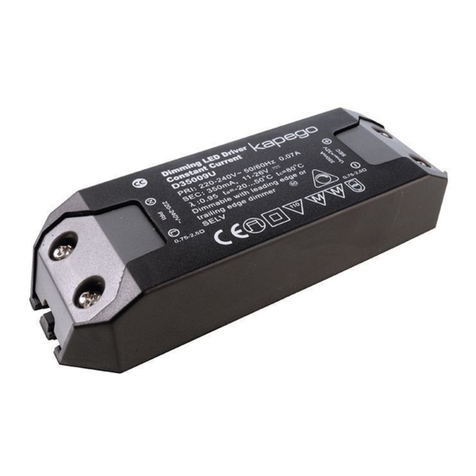True blue power TS28 Technical Document

Revision C •October 17, 2023

1 Manual Number 9019932 •Revision C, October 17, 2023
FOREWORD
This manual provides information intended for use by persons who, in accordance with current
regulatory requirements, are qualified to install this equipment. If further information is required,
please contact:
True Blue Power
c/o Mid-Continent Instrument Co., Inc.
Attn: Customer Service Dept.
9400 E. 34th St. N.
Wichita, KS 67226 USA
Phone 316-630-0101
Fax 316-630-0723
www.truebluepowerusa.com
www.mcico.com
We welcome your comments concerning this manual. Although every effort has been made to
keep it free of errors, some may occur. When reporting a specific problem, please describe it
briefly and include the manual part number, the paragraph/figure/table number, and the page
number. Send your comments to:
True Blue Power
c/o Mid-Continent Instrument Co., Inc.
Attn: Technical Publications
9400 E. 34th St. N.
Wichita, KS 67226 USA
Phone 316-630-0101
Fax 316-630-0723
© Copyright 2023
Mid-Continent Instrument Co., Inc.
Download the
current version
of this installation
manual using your
smartphone or tablet.

2 Manual Number 9019932 •Revision C, October 17, 2023
TABLE OF CONTENTS
SECTION 1 GENERAL DESCRIPTION 4
1.1 INTRODUCTION 4
1.2 PHYSICAL ATTRIBUTES 4
1.3 UNIT ARCHITECTURE 4
1.4 TECHNICAL SPECIFICATIONS 5
1.5 IMPORTANT SAFETY INFORMATION 7
SECTION 2 PRE-INSTALLATION CONSIDERATIONS 9
2.1 COOLING 9
2.2 EQUIPMENT LOCATION 9
2.3 ROUTING OF CABLES 9
2.4 LIMITATIONS 9
2.5 MODIFICATION 10
SECTION 3 INSTALLATION 11
3.1 GENERAL 11
3.2 PRE-INSTALLATION INSPECTION 11
3.3 PARTS 11
3.4 INSTALLATION 11
SECTION 4 OPERATION 13
4.1 DESCRIPTION 13
4.2 THEORY OF OPERATION 13
4.3 BATTERY PERFORMANCE AND CAPACITY 14
4.4 MAINTENANCE 15
SECTION 5 CONFORMANCE 16
5.1 DISPATCH VERIFICATION AND IN-FLIGHT MONITORING 16
5.2 ROUTINE MAINTENANCE AND RETURN TO SERVICE 16
5.3 COMPONENT MAINTENANCE 17
5.4 STORAGE INFORMATION 18
5.5 END OF LIFE 19
5.6 DISPOSAL 19
5.7 ENVIRONMENTAL QUALIFICATION STATEMENT 20

3 Manual Number 9019932 •Revision C, October 17, 2023
REVISION HISTORY
Rev
Date
Detail
Approved
A
08/24/2023
Production Release
ESH
B
09/29/2023
Changed Capacity to Wh, and output current to 1.1 A
AS
C
10/17/2023
Updated figure 1.1.
MKN

4 Manual Number 9019932 •Revision C, October 17, 2023
SECTION 1 GENERAL DESCRIPTION
1.1 INTRODUCTION
The True Blue Power TS28 series Emergency Battery Power Supply is designed to supply DC
power for aircraft loads such as lighting and other critical equipment in the event of a primary
power loss. During normal aircraft operation, the TS28 Emergency Battery Power Supply (EBPS)
will utilize aircraft power to recharge or maintain existing charge at full capacity. The TS28 is a
sophisticated power system that utilizes state-of-the-art NiMH cell technology which provides
improvements in performance, safety, and life when compared to traditional or competing backup
systems. With emphasis on a robust design, the EBPS meets applicable regulatory standards
and has been tested to environmental and performance qualifications that exceed industry
requirements. The TS28 is a complete EBPS that provides significant value and benefit to an
aircraft designer, owner and operator.
The TS28 requires professional use and maintenance to deliver maximum performance and
value as designed. This manual contains information related to the specifications, installation,
operation, storage, scheduled maintenance, and other related topics associated with the proper
care and use of this product.
1.2 PHYSICAL ATTRIBUTES
The TS28 consists of a rugged metal chassis with a 4-pin Mil-Spec circular-style connector for
electrical interface, and a rechargeable battery that is easily removed to shorten maintenance
timelines and extend product life. The unit is designed to be mounted with four threaded
fasteners to attach the unit to the aircraft structure.
1.3 UNIT ARCHITECTURE
The unit is comprised of four primary functional pieces:
•Main Boards
•Connector Interface Board
•Battery Pack
•Metal Chassis
The external 4-pin connector used for charging, discharging and power pass-through is
connected internally to one of two main printed circuit boards (PCBs). The Main Boards provide
control of all battery functions such as management, charging and discharging. The main boards
also protect against short circuit, over temperature, under-voltage, over-voltage, and EMI
filtering.
The Battery Pack assembly contains twenty (20) cells in series, temperature sensors for
monitoring, and includes the Connector Interface Board. When installed, the connector on the
interface board plugs the battery pack into the main board. The battery pack is housed in its own
rugged metal chassis for easy handling and streamlined replacement as needed.

5 Manual Number 9019932 •Revision C, October 17, 2023
1.4 TECHNICAL SPECIFICATIONS
Electrical Attributes
Power Input:
26.5 to 32 VDC; 0.8 A peak
Nominal Power Output
1.1 A @ 24 VDC nominal
Max Continuous Current Output:
3 A
Battery Capacity:
28 Wh
Charge Time @ 28 VDC:
2.5 hours to 95% state of charge;
+1 hour to 100% state of charge
Discharge Time:
60 minutes @ 1.1 A
Maintenance:
Perform capacity check every 24 months
Table 1.1
Table 1.2
Qualifications
Certification:
FAA TSO-C173a
Performance Qualification:
RTCA DO-293A
Minimum Operational Performance Standards for
Rechargeable Nickel-Metal Hydride (NiMH) Batteries
and Battery Systems
Environmental Qualification:
RTCA DO-160G
(see Section 5.7 for tests and categories)
Table 1.3
Physical Attributes
Weight:
1.7 pounds [0.84 kg]
Dimensions: (LxWxH)
(See Figure 1.1)
5.5 x 4.4 x 1.5 inches - without connector
[140 x 112 x 38 mm]
Mating Connector:
MS3116E-4P or equivalent
Mounting: (See Figure 1.1)
Chassis mounted with (4) #6 Screws

6 Manual Number 9019932 •Revision C, October 17, 2023
Figure 1.1
Outline Drawing

7 Manual Number 9019932 •Revision C, October 17, 2023
1.5 IMPORTANT SAFETY INFORMATION
1.5.1 Symbol Definition
Read this safety information BEFORE maintaining or servicing the battery.
This section describes the precautions necessary for safe operations. The following safety
symbols have been placed throughout the guide.
Warnings identify conditions or practices that could result in personal injury.
Cautions identify conditions or practices that could result in damage to the equipment.
1.5.2 Handling Precautions
Though the TS28 has short circuit protection, caution should always be used when working
with battery powered products. It is recommended to wear safety glasses and use insulated
tools when servicing the EBPS.
•Mishandling the battery could generate a short circuit, cause its insulation to melt, or
cause damage to its safety valve or safety mechanism, which may in turn cause the
battery to generate heat or leak. Be sure to follow the instructions listed below when
using the battery:
oDo not disassemble or modify the battery pack.
oThe battery pack is keyed to fit one way into the main chassis. When installing a
pack, if it cannot readily be fitted, do not insert the battery by force. Check
orientation and try again or verify that the pack or chassis are not damaged.
oWhen servicing the EPBS or battery, use the specified battery charger and/or
instructions as provided in this manual.
oDo not place the battery in a fire or heat the battery.
oIf connecting to the battery externally, never reverse the positive/negative pins.
oDo not connect the battery to a power outlet.
oDo not connect the positive terminal and the negative terminal of the battery to
each other with any metal object such as a wire.
oDo not carry or store batteries together with jewelry or other metal objects.
•The battery contains an alkaline electrolyte. This electrolyte may result in the loss of
eyesight if it comes into contact with an eye. In such cases, do not rub the eye, but
immediately wash the eye with clean water and then consult a doctor.
•Remove metal items such as rings, bracelets, and watches when working with
batteries. A battery could produce a short circuit current that could harm a person.
CAUTION
WARNING
WARNING

8 Manual Number 9019932 •Revision C, October 17, 2023
•All connections for battery pack testing must include appropriate short-circuit protection
as these are not present once the pack is removed from the product. Shorting the
battery pack can result in venting cells and personal injury.
•Ensure that the TS28 service area is properly ventilated and egress paths are
unobstructed.
•Specialized breathing filters are not required for normal use.
•Always use insulated tools.
•Never smoke or allow a spark or flame near the TS28.
•Use caution to reduce the risk of dropping a metal tool on the unit. Dropping a tool
could spark or short circuit the TS28.
1.5.3 Additional Precautions
The following design and operation factors are required for safe use.
•It is not acceptable to combine or use any battery cells or modules other than those
approved by True Blue Power.
•Always use appropriate Electrostatic Discharge (ESD) protection while working with the
TS28.
•There are no limitations in storing or using this TS28 in the vicinity of other battery
chemistries. The TS28 does not emit or absorb any gas during storage, transportation
or during normal operating conditions.
•It is recommended to cover terminals and connectors with non-conductive protective
devices to avoid any possibility of shorting during handling, shipping or storage.
1.5.4 Shipping
Shipping complies with domestic and international shipping regulations.
This product is NOT, nor are any of its components, restricted for the purposes of
transportation by the U.S. Department of Transportation, see 49 CFR 172.102. Any method
of shipping is considered acceptable, without restrictions.
CAUTION

9 Manual Number 9019932 •Revision C, October 17, 2023
SECTION 2 PRE-INSTALLATION CONSIDERATIONS
2.1 COOLING
No internal or external cooling of the unit is required. The unit is designed to operate over a wide
temperature range and includes internal thermal monitoring and protection circuits.
2.2 EQUIPMENT LOCATION
The TS28 EBPS is designed to mount in a temperature-controlled environment. Although not
required, optimum performance and life can be achieved by mounting the unit in a temperature-
controlled section of the aircraft that does not fall below -8°C or rise above +70°C. The unit is
designed to withstand elevated levels of condensing humidity. However, installation locations
where the unit could be subject to standing or direct water exposure should be avoided. The unit
has no limitations regarding mounting orientation.
2.3 ROUTING OF CABLES
Avoid sharp bends in cabling and be cautious of routing near aircraft control cables. Also avoid
proximity and contact with aircraft structures, avionics equipment, or other obstructions that could
chafe wires during flight and cause undesirable effects. Cables should not run adjacent to
heaters, engine exhausts, or other heat sources. Individual wires are recommended to be no
smaller than 20 gauge.
2.4 LIMITATIONS
The conditions and tests for TSO approval of the TS28 are minimum performance standards.
Those installing the TS28, on or in a specific type or class of aircraft, must determine that the
aircraft installation conditions are within the TSO standards. TSO compliant products must
receive additional installation approval prior to being operated on each aircraft. This article meets
the minimum performance and quality control standards required by a technical standard order
(TSO).
Installation of this article requires separate approval. The TS28 may be installed only according
to 14 CFR Part 43 or the applicable airworthiness requirements.
Also see Section 2.2 for limitations associated with equipment installation location.

10 Manual Number 9019932 •Revision C, October 17, 2023
2.5 MODIFICATION
This product has a nameplate that identifies the manufacturer, part number, description,
certification(s), and technical specifications of the unit. It also includes the “MOD” or modification
number representing notable changes in the hardware design of the unit.
Modification (MOD) 0 is the initial release of the product and is identified on the nameplate by the
lack of marking on the MOD numbers 1 through 9 (i.e. 1-9 are visible). All subsequent
modifications are identified on the nameplate by the marking/blacking out of that particular MOD
number (i.e. for MOD 1, the number 1 is not visible and 2-9 are visible - see Figure 2.1 for
examples). MODs do not have to be sequentially inclusive and may be applied independent of
each other.
For additional details regarding specific changes associated with each MOD status refer to the
published Service Bulletins for this product at www.truebluepowerusa.com.
Figure 2.1
Nameplate and MOD Status Example
MOD 0
MOD 1
MOD 1
& MOD 2

11 Manual Number 9019932 •Revision C, October 17, 2023
SECTION 3 INSTALLATION
3.1 GENERAL
This section contains mounting, electrical connections and other information required for
installation. These instructions represent a typical installation and are not specific to any aircraft.
3.2 PRE-INSTALLATION INSPECTION
Unpacking: Carefully remove the TS28 battery from the shipping container
Inspect for Damage: Inspect the shipping container and unit for any signs of damage sustained in
transit. If necessary, return the unit to the factory using the original shipping container and
packing materials. File any claim for damages with the carrier.
3.3 PARTS
3.3.1 Included Parts
A. TS28 Emergency Battery Power Supply MCIA P/N 6430028-( )
B. Installation and Operation Manual MCIA P/N 9019932
i. (Available online)
3.3.2 Available Parts
A. Connector Kit MCIA P/N 9015514-1
B. Replacement Battery Pack MCIA P/N 9019931
3.3.3 Installer Supplied Parts
A. Wires
B. Appropriate mounting hardware
3.4 INSTALLATION
The connector pins of the TS28 are always active and energized.
DO NOT SHORT CONNECTOR PINS AT ANY TIME!
Always use extreme care and caution when handling and connecting to the unit, equipment
damage can occur if not handled properly.
See Section 1.5 for additional handling precautions.
WARNING

12 Manual Number 9019932 •Revision C, October 17, 2023
3.4.1 Harness Preparation
Prepare aircraft wiring with mating connectors in accordance with the proper Wire
Size and Type (
Table 3.1), Unit Locations (Figure 3.1), Pin Identification Diagram (Figure 3.2), and
Pin Functions (Table 3.2). Recommended external connections to the aircraft can
be seen in Figure 3.4.
Use of PTFE, ETFE, TFE, Teflon or Tefzel insulated wire is recommended for
aircraft use. Recommended wire sizes and types are identified in
Table 3.1 below.
Table 3.1
Wire Size and Type
Pin
A
B
C
D
Emergency Battery Power Supply
Connector (4-pin)
Pin Function
Vin
GND
Vout
Figure 3.1 Table 3.2
EBPS Connector Connector Pinout
3.4.2 Installation and Wiring
3.4.3 Securing the Unit
The TS28 is designed to be secured in the aircraft using four (4) #6 screws (or equivalent)
located 2.4 inches apart on each side of the unit in accordance with Figure 1.1.
Wire Size and Type
Wire Gauge
Wire Type
Connector
Pins
18-20 AWG
Stranded Copper
4-pin
1-4
TS28
A
C
B
D
28V Bus Input
Power Return
Output Voltage
Output Voltage
internally
shorted

13 Manual Number 9019932 •Revision C, October 17, 2023
SECTION 4 OPERATION
4.1 DESCRIPTION
The True Blue Power TS28 series Emergency Battery Power Supply (EBPS) is designed to
supply DC power for aircraft loads such as lighting and other critical equipment in the event of a
primary power loss. It utilizes rechargeable nickel metal hydride (NiMH) chemistry to provide
output power. During normal aircraft operation, the TS28 EBPS will utilize the aircraft’s primary
power bus to recharge or maintain existing charge at full capacity. When the TS28 detects a loss
of the input power, it provides output power from the battery.
4.2 THEORY OF OPERATION
The TS28 Emergency Battery Power Supply system provides a nominal voltage output of 24
VDC and a maximum power output of 3.0 amps. The units are designed to receive an input
between 26.5-32 VDC and to seamlessly switch to backup battery in the event that the input bus
is not present. Refer to Section 3.4 for external connection to aircraft controls.
4.2.1 Input bus present
If the input bus is present, it will pass through to the output of the TS28 and maintain or
charge the backup batteries. When charging, the load on the aircraft system is
approximately 0.7 A during fast charge and 0.2 A during trickle charge, falling to zero when
the cells are fully charged. The unit constantly monitors a variety of conditions such as
voltage, current and temperature. The TS28 will continue to pass the bus power through for
all charging protections. Only the output current limiting/short circuit shut down will affect
the bus pass through. In the case of a short circuit or extended over current event, the unit
will enter protection mode by automatically disconnecting the TS28 from the charging
source.
4.2.2 Input bus dropout
If the input bus drops out or is below 18.8 V, the unit will switch over to the battery output.
The transfer from the loss of input until backup power is available is approximately 30
milliseconds.
4.2.3 Discharge
In order for the battery to provide power, the TS28 must first sense primary input power,
then detect loss of power. Once activated, the battery voltage will decay from
approximately 28 VDC at full charge to approximately 15.2 VDC at the end of discharge
(see Section 4.3). This voltage is referred to as End Point Voltage (EPV). Once the unit has
reached EPV, the output will be shut off. Short circuit protection is based on a 6-amp
current limit. If the current exceeds this, the unit will shutoff for 25 ±10 seconds and then try
again. While 6 amps is the upper limit and will initiate an immediate shutoff sequence, the
unit does allow for up to 3 amps continuously with short-term over-current operation
between 3 A to 6 A.

14 Manual Number 9019932 •Revision C, October 17, 2023
4.2.4 Software and Complex Hardware
No software or complex hardware is incorporated in the design of this product.
4.3 BATTERY PERFORMANCE AND CAPACITY
The TS28 utilizes nickel metal hydride (NiMH) cell technology and modern battery management
techniques to provide significant benefits over traditional battery chemistries and products.
NiMH provides more energy in less space and weight than either sealed lead acid (SLA) or nickel
cadmium (NiCad) batteries. This equates to smaller, lighter, and/or longer lasting products.
Additionally, the TS28 significantly reduces maintenance cost by eliminating the memory effect
common to NiCad batteries which reduces their useful capacity over time. This allows more
flexible charging and discharging cycles, along with higher cycle life, without an impact on
capacity.
Further, the use of modern NiMH technology in the TS28 provides for extremely low self-
discharge, producing a long shelf life and on-demand state of charge after periods of non-use.
This means they can retain their stored energy for longer periods without requiring frequent
recharging. NiMH batteries are better suited for applications that demand extended periods of
standby or intermittent use.
Unlike lead acid or NiCad batteries, NiMH batteries do not contain toxic lead or cadmium, making
them more environmentally friendly and safer for disposal. NiMH batteries are considered a more
sustainable choice due to their reduced environmental impact.
Figure 4.1
0
5
10
15
20
25
30
010 20 30 40 50 60 70 80
Voltage (VDC)
Time (Minutes)
Typical Discharge
Curves
(6430028-1, 1C-3C Constant
Current Load, Discharge to EVP)

15 Manual Number 9019932 •Revision C, October 17, 2023
4.4 MAINTENANCE
Because the cells are designed to maintain their charge-holding capability over time, True Blue
Power recommends a 24-month maintenance cycle. The 24-month check includes a full charge,
discharge, and recharge while evaluating the discharge time against minimum requirements.
Additionally, True Blue Power recommends conducting this procedure at any time when the
capacity of the unit is in question or after being utilized in an in-flight emergency situation. For
more details on the charging and capacity check, see Section 5.2.

16 Manual Number 9019932 •Revision C, October 17, 2023
SECTION 5 CONFORMANCE
5.1 DISPATCH VERIFICATION AND IN-FLIGHT MONITORING
The TS28 typically serves to provide aircraft exit lighting upon loss of aircraft power. There is no
dispatch signal. It is recommended to test functionality prior to flight by exercising the emergency
lighting system.
5.2 ROUTINE MAINTENANCE AND RETURN TO SERVICE
The TS28 requires scheduled maintenance based on calendar life of the EBPS. Maintenance as
described in this section shall be conducted every 24 months from date of original aircraft
delivery or subsequent new battery installation. The TS28 battery shall be recharged every 6
months or kept constantly connected to 28V if maintaining a full or nearly full charge during
storage is desirable. Though it is not recommended, allowing the batteries to discharge
completely in storage is unlikely to cause damage to the cells. Optionally, the battery may be
stored out of the unit to maintain its charge. A charge and capacity check are still required prior
to installation and return to service.
5.2.1 Visual Inspection
Remove the unit from the aircraft. Visually inspect the exterior of the TS28 casing for signs
of damage or wear. Verify that the battery tray is secure, and not loose. Verify that no
damage has occurred which would prevent the TS28 from functioning. If any wear is
apparent which has not compromised the case, inspect the TS28 area of the aircraft for any
signs of improper installation.
Visually inspect the connector. Verify that it is not loose and there are no signs of damage,
wear, or corrosion.
If any of the above conditions are present, the unit must be evaluated and tested for repair
or replacement by an authorized repair facility.
5.2.2 Charging and Capacity Check
To charge the TS28, apply 28V to pin A and ground to pin B. To discharge the TS28, apply
a load on pin C or D referenced to pin B. The TS28 charge current is between 0.80 A to
0.60 A at the start of charge and the current will rise. This rise will have 1 or 2 sharp step
downs in current, but the charge is not complete until the unit reaches less than 0.02 A.
Charge should take approximately 2 to 3 hours with about 90% of the energy coming from
the first 2 hours.

17 Manual Number 9019932 •Revision C, October 17, 2023
To perform a capacity check, you must first fully charge the unit and then discharge the unit
at 1 A. Start a timer when discharge begins. Once the unit stops discharging, stop the
timer. The capacity of the unit in Ah is 1 A ∗ time (minutes)
60 .
In summary:
1. Charge:
a. Pin A (Vin) to B (ground) should be at 28 V nominal.
b. Charge current should start between 0.80 A to 0.60 A, and end below 0.02 A.
2. Discharge:
a. Pin C or D to B, 1 A load.
i. Pin C and D are shorted internally.
b. Start timer when load is applied, end timer when load goes to 0 A.
c. Calculate capacity using this formula 𝐶𝑎𝑝𝑎𝑐𝑖𝑡𝑦 = 1 A ∗ time (minutes)
60 .
5.3 COMPONENT MAINTENANCE
The individual components such as the cells, electronics, or hardware that comprise the TS28
EBPS are not user serviceable.
However, the battery pack assembly (MCIA p/n 9019931) is field replaceable. See Figure 5.1
below for instructions on removal and replacement.
After installation, refer to Section 5.2 for procedures to return the unit to service.
Replacement:
Repeat steps above in reverse order. Do not apply excess force when installing the battery pack. Verify
proper alignment (rivet tabs are down) and the pack should engage with minimal effort. Apply 5.0 to 5.5
in-lbs of torque to tighten the screws.
Figure 5.1
Replacing the Battery Pack
Step 2: Slide Battery out
of enclosure.
Step 1: Remove two
Phillips-head screws
on the read of the unit

18 Manual Number 9019932 •Revision C, October 17, 2023
5.4 STORAGE INFORMATION
In normal use, the TS28 utilizes the aircraft power to maintain the proper charge voltage and
sustain the battery cells at peak capacity. When not installed on an aircraft the TS28 will remain
in a powered state and will self-discharge with time. Although the chemistry of the cells used in
the TS28 maintain an extremely low relative self-discharge rate, all batteries will slowly self-
discharge if left uncharged for prolonged periods. In addition, self-discharge rates are directly
related to the storage temperature. Higher storage temperatures will result in faster self-
discharge rates.
Rechargeable NiMH batteries should be stored in a dry, well-ventilated area. The unit can be
stored in the same area as other battery chemistries. The TS28 does not emit or absorb any gas
during storage, transportation, or during normal operating conditions.
SHELF LIFE: Units that are stored shall follow instructions under 5.2 for
storage conditions and maintenance.
STORAGE TEMPERATURE: Exposure to temperatures above 30°C (86°F) for
sustained periods of time is possible but may increase the self-discharge rate
or result in some permanent loss of capacity. Storage temperatures above
45ºC (113°F) are to be avoided.
CAUTION

19 Manual Number 9019932 •Revision C, October 17, 2023
5.5 END OF LIFE
The following conditions will help maintain or extend the life and performance of your product:
•Avoid significant exposure to elevated temperatures (above 30°C (86°F)) during operation
or storage.
•Store NiMH batteries in a dry location with low humidity, no corrosive gases, and at a
temperature range of -20°C (-4°F) to 45ºC (113°F).
•Store NiMH batteries at around 40% state of charge (SoC) to curtail age-related capacity
loss while keeping the battery operational and allowing some self-discharge.
•Avoid over-discharging NiMH batteries, as it can shorten their lifespan.
•Do not attempt to charge battery pack (9019931) outside of the TS28 EBPS or damage can
occur to the cells.
End of life is represented by the inability of the unit to meet the minimum capacity requirement of
the aircraft as tested during capacity verification per Section 5.2. In the event that the unit
exhibits failure, insufficient capacity or expired life, contact True Blue Power for repair, exchange
or replacement. Visit www.truebluepowerusa.com for more information.
5.6 DISPOSAL
NOTE: All NiMH batteries are classified by the United States government as non-hazardous
waste and are safe for disposal as normal municipal waste. However, these batteries do contain
recyclable materials and recycling options available in your local area should be considered
when disposing of this product. Dispose of in accordance with local and federal laws and
regulations. Do not incinerate.
Table of contents
Other True blue power Power Supply manuals

